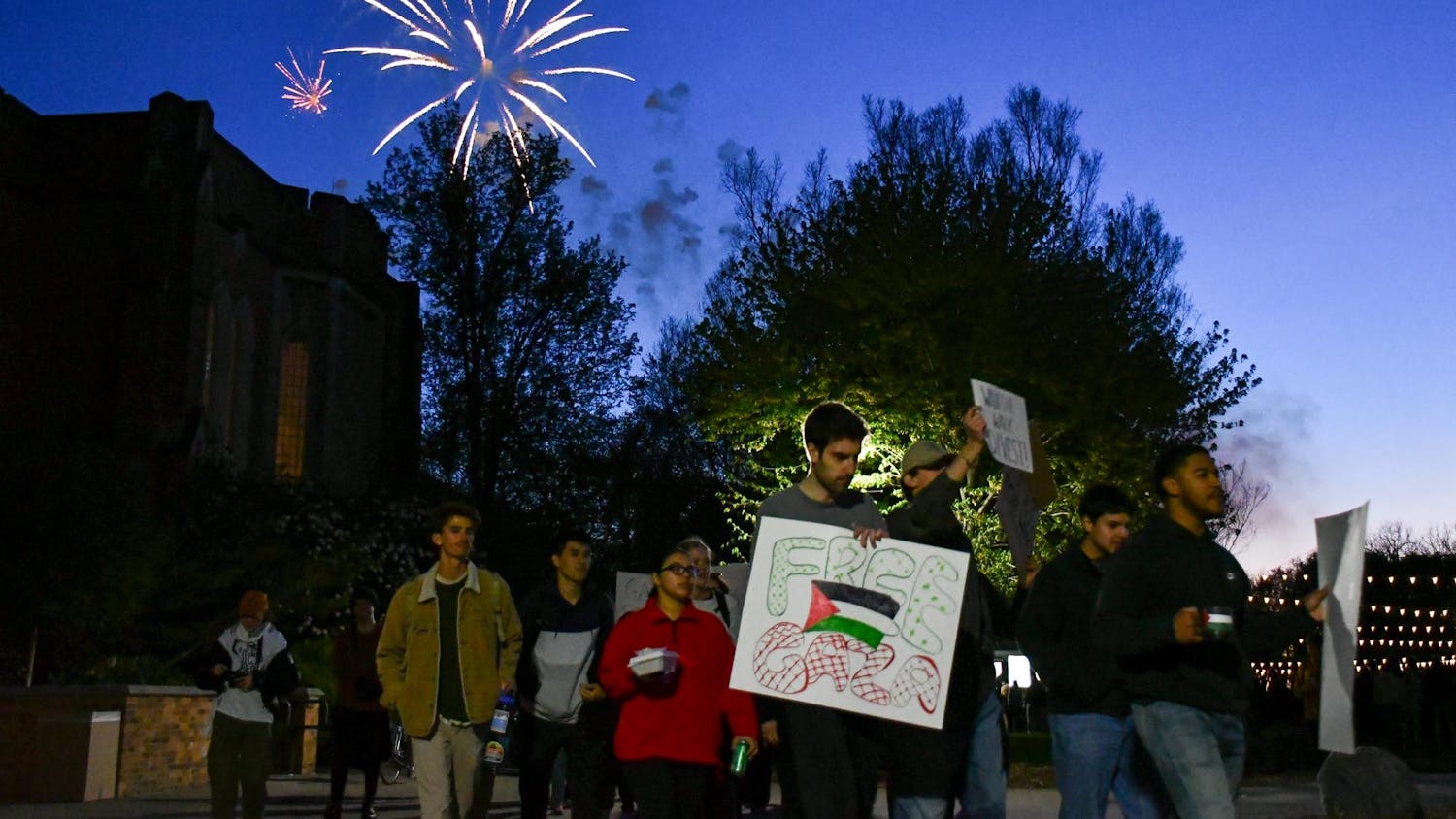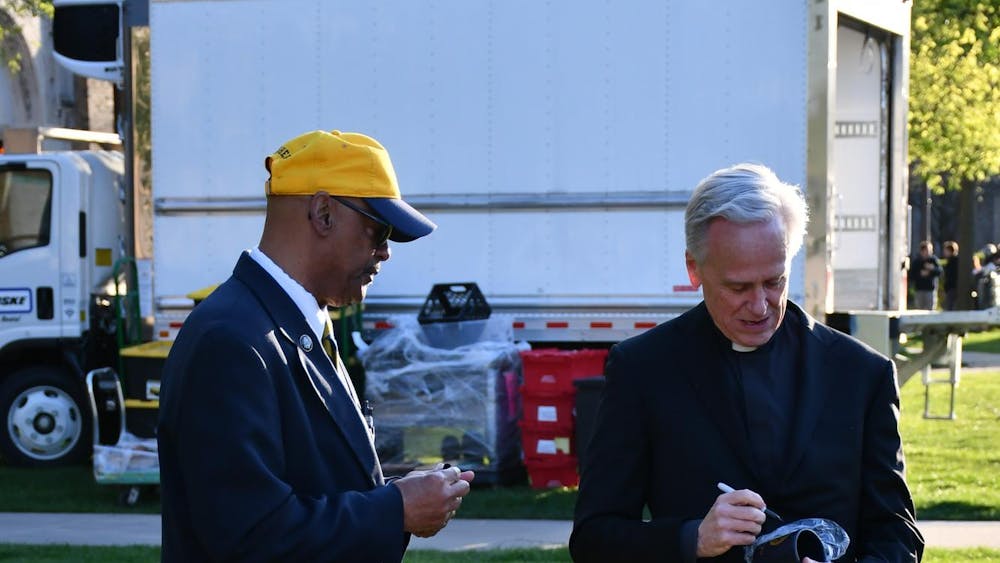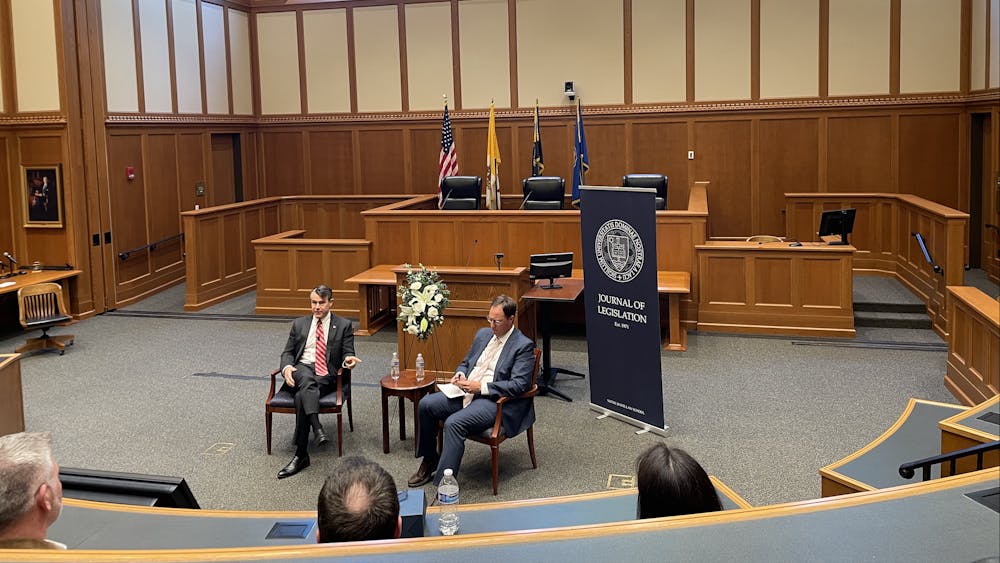The Muslim Student Association of Notre Dame hosted an installment of the Prayers from around the World lecture series Tuesday evening in the Coleman-Morse Center student lounge as part of Islam Awareness Week. The event, entitled “Understanding the Hijab,” featured two speakers from the greater South Bend area who teach and practice Islam.
Imam Mohammed Sirajuddin said the hijab is a concept that is found in different forms in various other faiths.
“Hijab is a practice, not just when we piece off cloth that we put on our heads,” Sirajuddin said. “Hijab is the concept of modesty that exists in all other Abrahamic faith traditions. If you look at pictures of Christian and Jewish women from 100 years ago, you will find hijab.”
Sirajuddin said the term hijab that the many associate with the hair covering of women is relatively new.
“In the classical Islamic jurisprudence, this word itself is used many times in the Quran, but not particularly to describe the hair covering,” Sirajuddin said. “The word hijab literally means 'screening,' or 'barrier.' So it is used many times in the Quran, but not with the same meaning that we use today.”
“When we say hijab, what Muslims mean is a modest dress, lowering our gazes, showing modesty towards the opposite gender, and not displaying our parts of beauty and the ornaments that could provoke the passion of the opposite gender,” Sirajuddin said.
There is a similar verse in the Quran prior to the verse regarding women that pertains to men, Sirajuddin said.
“The verse instructs men to lower their gaze, be modest and not to show off,” he said. "There is a modesty in the dress in men just as there is for women, but not necessarily the same requirements."
Sirajuddin said the connection between prayer and everyday life makes the debate about the proper time for hijab unimportant in the Muslim faith.
“Inside the prayer, there is a consensus that covering parts of body, especially your hair and your head, is an obligation,” Sirajuddin said. “In the ritual prayer that Muslims offer five times a day, it isn’t controversial, but in the classical Muslim jurisprudence, you don’t find any difference between having hijab during prayer and having it outside of prayer.”
Sirajuddin said the controversy about hijab inside the Islamic community is a byproduct of society.
“This question of whether hijab is an obligation or whether it is a suggestion for Muslim women is a product of our times,” Sirajuddin said. “We see toward the Islamic tradition and in the Muslim jurisprudence that there has never been a dispute about this issue of modest dress for Muslim women.
“All qualified Islamic scholars throughout history agree on the obligation of hijab. It is not a religious symbol, it is not a cultural symbol to differentiate between Muslim and non-Muslim women, rather it is a dress code ordained by law on Muslim women."
The event's second speaker, Jamille Jojo, said the choice to cover her hair and practice hijab was an easy one.
“My father came to me, he showed me the verse in the Quran, and he asked what I thought,” Jojo said. “I said, 'okay.' The next day, with God as my witness, I covered my hair and I continue to do so. “
Jojo said her consistency is as much as a character trait as it is a dedication to her faith.
“I’m not a halfway kind of person,” she said. “If I’m going to learn something I’m going to learn it to the maximum that I can. If I’m going to have a slice of pie, it’s going to be a good slice. So why wouldn’t I take that same approach with my faith?”
Jojo said she covers her hair simply because it is what she has been asked to do.
“It wasn’t because I’m now going to be a women’s liberator,” Jojo said. “It wasn’t because I wanted to stand out in a crowd. It’s not because I want people to come up and ask me why I’m covering my hair. I covered it specifically because its what God tells me to do in the Quran.”
Jojo said there is a modesty requirement for both men and women within Islam, but they are different because of the nature of the male and female body.
“For women, to be honest, their hands and their face can be shown because a woman is a sexual being by definition,” Jojo said. “A man, on the other hand, could be shirtless, and nobody is going to say a word. He has to wear a pant above the knee or the middle of the knee, so he can’t walk around in short shorts either.
“That’s just the way it is because of the way a man is versus a woman. That doesn’t make them better; it just makes them different.”
Sirajuddin said hijab is commanded by God, and obeying God is central to what it means to be a Muslim.
“We are Muslims, which basically means that we will submit to the will of God and obey God’s commandment, and you follow his teachings, not because of good feelings or spiritual accomplish, as a result you will have those things," Sirajuddin said. "You do it because God commanded you to do it, and you obey God because he is God.”













